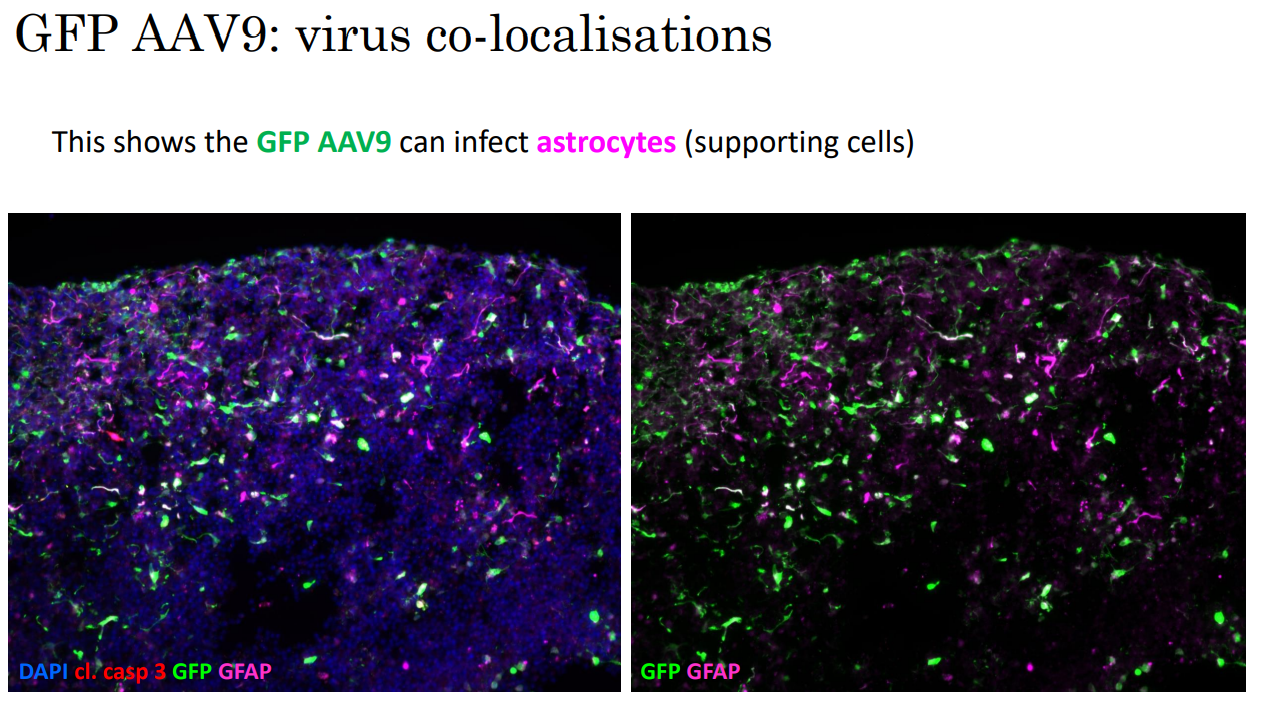Our Moon’s Mission has been dedicated to the pursuit of innovative gene therapy solutions for SPG56, the rare neurodegenerative disease that affects children like our young Tallulah Moon. Thanks to the hard work of top researchers worldwide, Genetic Cures for Kids has been making significant progress in developing a clean and effective viral vector for gene delivery. The breakthrough we’ve been waiting for finally feels within reach!
The AAV9 Gene Therapy in mice models
At the heart of our mission lies the AAV9 gene therapy – a “clean” virus designed to transport the functional gene that Tallulah and others with SPG56 desperately need. The AAV9 has proven to be highly promising in delivering the required gene in mice models, with excellent expression levels. However, we understand that mice are not perfect proxies for human patients, especially when dealing with complex neurolgical diseases like Hereditary Spastic Paraplegia Type 56 (SPG56).
A Closer Look using Human Brain Organoids
Recognising the limitations of using mouse models, Our Moon’s Mission has kept a long-standing partnership with the organoid experts from the Wolvetang Group at the University of Queensland’s Australian Institute of Bioengineering and Nanotechnology (AIBN). There, our team of mini-brain specialists have been tirelessly working with SPG56 patient brain organoids. These highly complex miniature brain models, developed in petri dishes from a simple blood sample, offer a more relevant and accurate representation of the human brain. Important when studying a brain disease!

The Triumph of Gene Expression
Researcher Dr. Hannah Leeson from AIBN has managed our mini-brain experiments with AAV9 gene therapy since 2021 and they’ve yielded promising results! Affectionately referred to as the “Mother of Organoids” for her long hours and dedicated nurturing of these remarkable brain models that mimic human brains with SPG56, Dr Leeson has shown, through vivid color-coded representations and accessible explanations, that the gene therapy can successfully deliver and express the vital gene within the mini-brains. This is a significant milestone on our journey towards finding a cure for SPG56. Importantly, the gene expression has proven non-toxic in all organoid studies, an assurance for the safety of the gene therapy.


The Next Steps
These hopeful results have injected fresh enthusiasm and momentum into Our Moon’s Mission but the path to a clinical trial is still long and filled with ongoing rigorous research. The next critical phase will involve examining the effects of the gene expression within the organoids, an essential step in determining its efficacy on the mini-brains and potential clinical trials. Because the this neurodegenerative disease also affects activity of the central nervous system, our organoid experts will test the gene therapy on a new type of organoid they have in development- mini spinal cords. Yes, these are also made just from a patient’s SPG56 blood sample. Incredible!
As our AIBN researchers forge ahead, now also supported by the Australian Government, the mission for this moonshot is becoming increasingly tangible. The progress we’ve made with AAV9 gene therapy, thanks to the dedication of collaborative researchers from all over the world, brings us closer to establishing a clinical entity for SPG56.
Our Moon’s Mission remains committed to making a difference in the lives of children like Tallulah who face the debilitating challenges of SPG56. Whilst we strive to fundraise to continue this vital research, this remarkable work with brain organoids has fuelled our emotional drive by bringing us a step closer to our ultimate goal. As we await the next set of tests to evaluate the therapy’s effects, we keep our fingers crossed for success. Together, we can make this moonshot a reality, proving that a cure for SPG56 is possible.
Thank you for your support!

